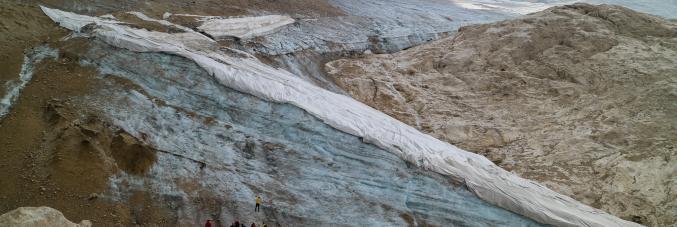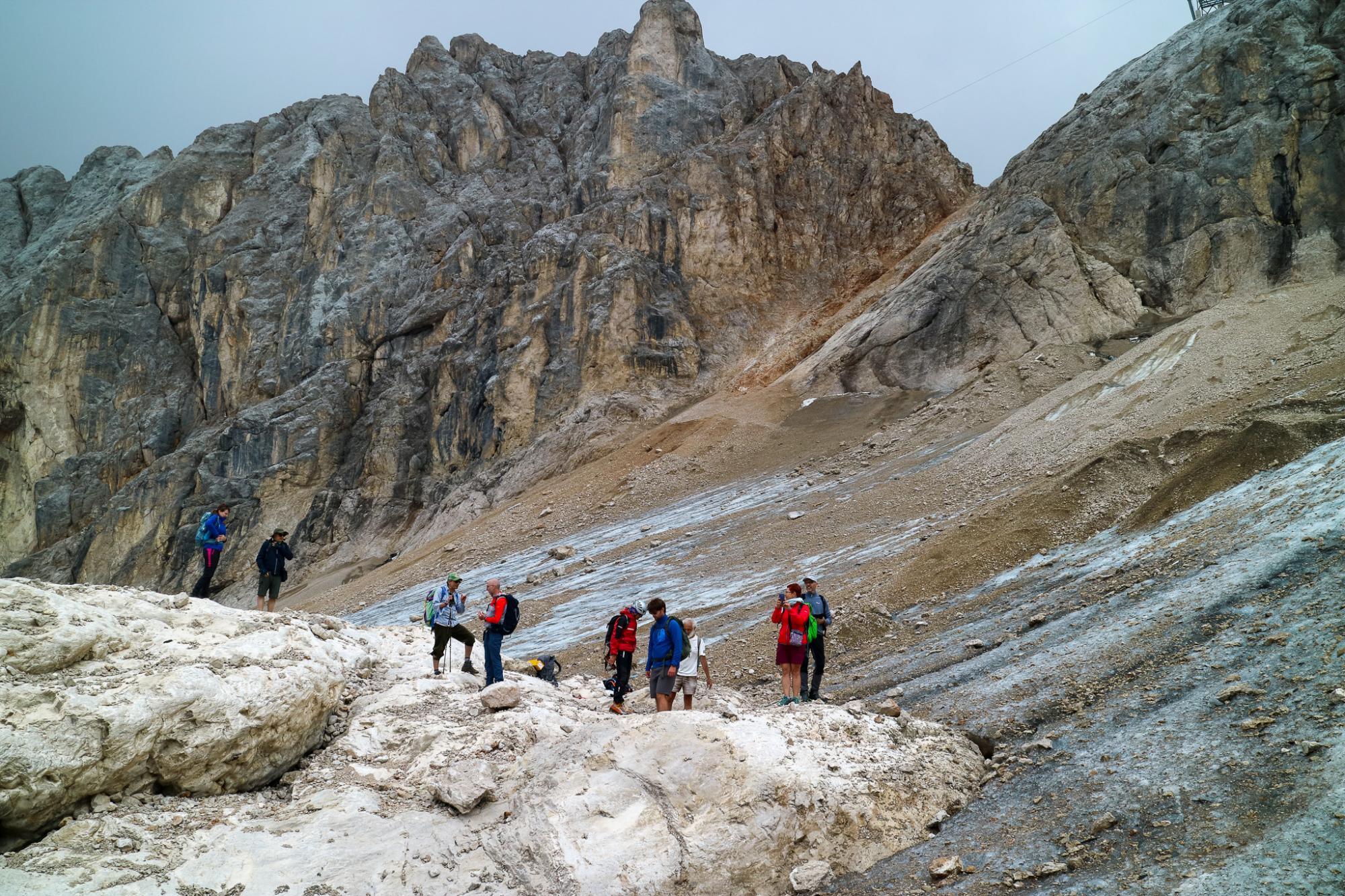
The Marmolada Glacier reduced to half over the last 25 years
08.09.2023
The surface area and volume of the Marmolada Glacier continues to shrink at an accelerated pace, as confirmed by the annual measurements conducted by geographers and glaciologists of the University of Padua. Such findings paint an increasingly bleak picture of the state of health of the most important glacier found along the Dolomite Alps.
With the glaciological campaign organized by the Museum of Geography of the University of Padua, in collaboration with the Italian Glaciological Committee and ARPAV, twenty expert hikers from Veneto, Emilia-Romagna, and Lombardy followed and recorded changes in the glacier’s measurements this year.
Prof Mauro Varotto of the University of Padua, responsible for measuring changes of the Marmolada Glacier, explains “In addition to the generalized thinning, the glacier is experiencing a dramatic situation as we record several points of deterioration. Findings point to regressions up to 90 meters annually, with an average retreat along the eight frontal signals of about 20 meters in a year. This melting trend will soon bring the total surface of the main glacier, calculated at 112 hectares by my colleague Francesco Ferrarese in 2022, to fall below one square kilometer in the next few years. This holds a statistically important threshold, as we witness half the surface measurement now stand in contrast to those presented in 2000, underling that such a calculation is less than a quarter compared to 1900."

ARPAV Research Technician, Mauro Valt shares more, "This summer, the glaciers along the entire Alpine arc are melting due to the combination of low snowfalls in the last two winter periods and high summer temperatures. The end of August reached the highest average temperature since 1990 in the Dolomites area. Such high temperatures coincide with several weeks in which temperatures exceeded the ninetieth percentile, determined as the longest series of extremely high temperatures reached over the last thirty-five years."
University Professor of Banking and Finance, Alberto Lanzavecchia comments, "The data provided by ARPAV highlights a 220-metre increase in the skiable altitude for each degree of increase in temperature. Such findings allow us to draw a picture of the unsustainability of the ski industry, made evident by the management balance sheets of the lifts and public subsidies for investments in cableways and water storage basins. Nonetheless, we must continue to discuss how to invest additional resources towards practicing snow farming instead of investing in alternatives to ensure a more sustainable economy."
Unipd Museum of Geography Curator, Giovanni Donadelli, concludes, "Now in its fifth edition, this initiative aims to bring the public closer to research practices through a comprehensive cultural experience. Thanks to the guidance of educators and experts, the public can observe, comprehend, and understand the problem at hand based on complex situations and processes. The multidisciplinary approach allows us to establish the profound relationship we hold with our land and its environment. Direct involvement represents a winning strategy, to engage participants through effectively promoting knowledge and awareness of climate change taking place along the Dolomite Alps."



